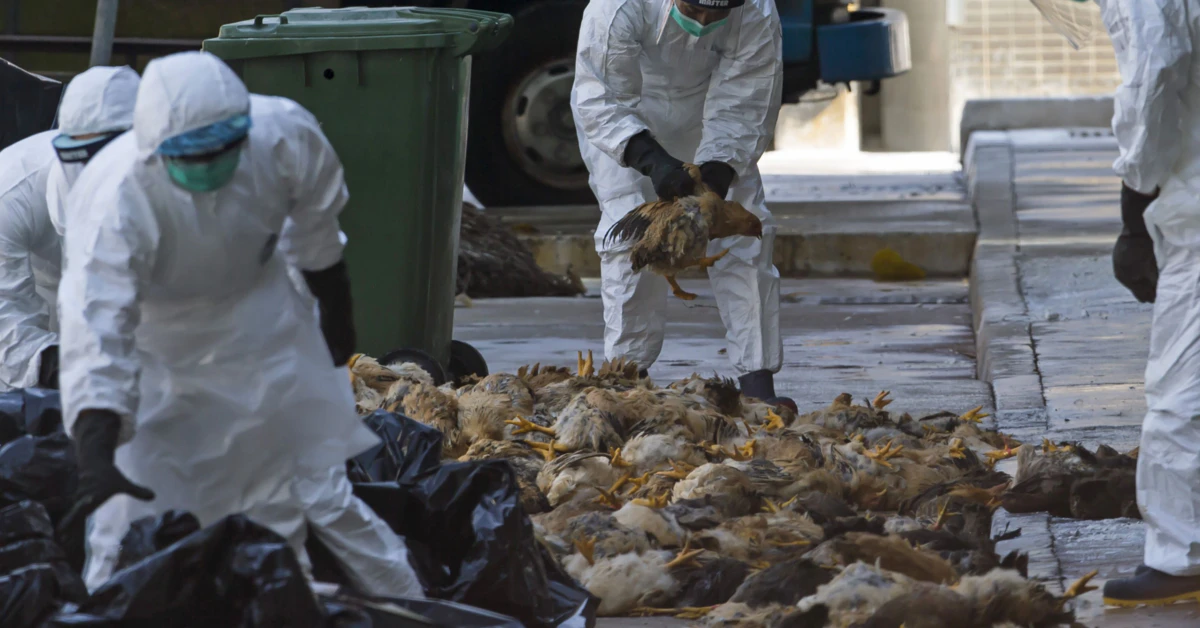Hot take: The CDC dialed down its H5N1 bird flu emergency status on July 2, 2025. Not because it vanished—it hasn’t—but because human cases dropped off, farm infections cooled, and politicians (yes, political decisions are a thing now) hit the pause button. The public health risk is low, but… should we pack up the hand sanitizer and call it a day?
Here’s the subtlety a lot of folks miss: Low risk ≠ no risk. Even the CDC says they’ll “ramp back up” if another human case pops. But right now? They’re treating bird flu like a grown adult—no day trips to the ER unless someone actually looks like they’re losing oxygen. So, what’s the deal on the science, warnings, and… are we really okay?
Current Situation
So What Changed? Here’s the Breakdown
Remember when the CDC had daily dashboards for bird flu? Yeah, those days are over. Now it’s “blended” with regular winter flu reports. That means updates come once a month, not every time your local news sends a chimp through the spin cycle.
According to CDC data, no humans have gotten the virus since February 2025, and agricultural outbreaks slowed from hundreds to… well, zero or near-zero. But don’t get too comfortable. They’re only ending the emergency, not the threat. Seasonal or not, this virus has a taste for comeback stories.
- H5N1 is still spreading in wild birds
- 17 U.S. states saw dairy cow infections last year
- Vermont smirks in the corner, saying they’re keeping surveillance rolling (even if they’re not infected right now)
Wait—You’re Saying Outsourcing Livestock Tracking Is Okay?
Yeah, that part’s tripping people out. For a while, you could hop on the CDC’s site and see chickens and humans in the same report. Not anymore. They’ll still track people, sure… but if a turkey gets moody and starts wheezing? Now you’re diving into USDA data. Big headache for farmers who used to get all their briefings here. Small-world irony? Spreading surveillance across agencies probably makes interdepartmental group chats a lot less streamlined.
Why the Switch? Politics, Logistics, and a Dash of ‘We’re Tired’
Here’s the tea: A Trump administration spokesperson said the virus is being bullseyed to low risk, but not everyone’s clinking glasses. CDC’s previous setup had over 375 people dedicated to this outbreak. Employees weren’t exactly glued to keyboards—they were running the whole mess from PPE guidance to lab testing. Now? Most of that team got shoved back into general flu work.
Translation: Less red tape. Less rush orders. But also less of a spotlight on what this virus could mutate into. Experts like Dr. Nirav Shah (you know, the former CDC deputy who’s now teaching epidemiology) said the deactivation was a CDC-driven move. No company men from D.C. Killjoy’ing their approach. Some state officials, like Washington’s Scott Lindquist, swore they’d keep watch. But in others? Shrinking surveillance teams and axed vaccine deals. Priorities changed like a LaCroix flavor shift in July.
Human Infections
70 Humans Have Touched This Virus. Just One Has Died.
Let’s decode the numbers behind H5N1’s human impact. The CDC says 70 total infections, with everyone… mostly okay. The one person who passed away? January 2025 in Louisiana. Close exposure to livestock confirmed. And yeah, every case tracked so far happened to people who slept, ate, or bathed in poultry feed for work.
No medical students here. This ain’t the plunge derby. But if you do dairy work or hanging out with free-range chickens (no judgment), you want to be picky about protective gear.
Symptoms: Mild Cold or Something Worse?
Human bird flu smells like a basic cold or flu at the start. Then—sometimes—it goes full monster movie and hits you with pneumonia, bleeding gums, or lungs that go full airbag deflation on you. Most are monitored with swabs and fast-tracked on Tamiflu, assuming they’re even spotted early.
Quick reminder: You can’t “catch” bird flu eating undercooked eggs… unless you’re not cooking at all. Nibble that soft-boiled in the parking lot after day-old-chicken duty? Sporadic case. The CDC and UK’s NHS both clarified—get your poultry done right. Easy fix. Not rocket science. Or last-century farmhouse alchemy.
But Wait—Weren’t More Cases Probably Missed?
Now we’re touching real messy. Jennifer (not her name—we all played silent disco on this) is a dairy foreman in California. Over 38 human cases came from her state. CDC thinks they’ve caught a decent clip of the unwell and rally team, but a lot of agricultural workers are skipped as long as symptoms don’t skip over to hospital gates. Not to mention some shelters or border collies don’t wag tails if federal teams come knocking. Back to Bloomberg’s May 2025 report:
- More than one state considered slashing cases tracked
- Some local health departments didn’t have the, uh, mood to keep aggressive reporting
- The Trump administration axed a massive Moderna $766 million bird flu vaccine project in early 2025. (Which would have made ‘cross-species hype-shots’ a thing.)
| Pre-Emergency | Post-Emergency |
|---|---|
| H5N1 virus got urgent status on CDC dashboards | Now labeled “routine,” swiped off to monthly Google Sheets |
| Federal and state lines moved at warp speed | Bureaucratic shuffle between USDA to CDC starts |
The bottom line? “Low risk” today doesn’t turn the virus into a peace lily. And health experts are already raising eyebrows about quieter mutations and missed mild symptoms lacking a bullhorn. Ever tried monitoring a virus wearing a poker face? Yeah. That’s a thing now.
Animal Impact
Dairy Cows Lifted This Virus into the Limelight
Back in 2024? People binge-watched the nearest Whole Foods like it was a horror flick. Word dropped—H5N1 is showing up in milk factories of the U.S. agricultural set-up. By April 2024, over 1,000 herds in 17 states got tested and shouted, “Game over.”
Fast-forward to real 2025? Testing is slowing… but not in every corner. Vermont’s still at it, even though they’re officially Uninfected. But here’s the kicker—they don’t wanna find their cheese curdling with bad news. So they’re keeping flies monitored until USDA says, “Enough, chief.”
Can Pets Catch This Now Too?
You’d probably want to keep Mittens and Pongo from batting at suspicious roadkill, but… cat owners, this ain’t zombie-level incubators anymore. Cornell Vet Lab said a few domestic felines actually showed signs of infection in 2025. Considering how curious Mr. Whiskers is, you don’t need to Google how tabby caught bird flu to feel the side-eye from your vet now.
Keep your pets inside. Keep them from sniffing chicken carcasses at the lake. Leashes. Yes, even for Fluffy, the bird-flu whisperer. USDA and CDC still advise no contact between animals (especially Fido/Felix) and areas where H5N1 cruises into town. And if your dog brings home the flu, you’re out of excuses. BIRD. FLU. Now POSSIBLE.
Prevention
The Real Steps That Can Pull You Through … No Masks Included
We see it all the time: CDC puts out an alert, and suddenly we think face masks are tier 1. But these guidelines are actually manageable. They said back in 2024, when this hit the dairy and poultry sector, the output was to:
- Wear gloves and face coverings near animals showing illness
- Wash hands like you’re auditioning for the next gel commercial
- Test before touching livestock or carcasses
- Isolate sick herds or flocks—like a quarantine block party
Some even ask for vendors to buddy up into livestock surveillance, so one wild sickness doesn’t turn into a dead giveaway. California, hardcore that it is, offered workers $25 gift cards for flu testing just to grease everyone into medical compliance. A mix of strategy and snacks.
Do’s and Don’ts Should Be on Every Backyard Farmer’s Bedside Table
Farm work is hard. You’ve got this virus chasing every chicken in sight? Even harder. So what can you really do that’s more than smoke and mirrors?
- Do report suspicious animal sickness fast to USDA or local health arm
- Do ask your vet to loop in human health pro guidelines if cats/dogs act odd
- Don’t handle birds (alive or recently expired) without PPE
- Don’t mix unwashed clothes or dirty boots between farms
Expert Take on Post-Emergency Risks
Former CDC Scientists Agree: Maybe We’re Getting Lazy?
Dr. Shah, ex-CDC deputy director, admit he saw the deactivation coming. “We were running daily marathons,” he said in a now viral quote, ” but there’s no emergency if no humans are dropping.” Fair. But here’s the thing with viruses—they play chess.
Piggybacking off Bloomberg’s March forward, several workers in migration-cycle counties said dairy farms are still sniffing at animal cases. Migratory birds are the original vectors of this chaos, and no agency’s biking the skies looking for coughing robins. If tracking relies on USDA instead? The response is slower. The grid harder to tap. The risk… still low. But the gaps? Now they’re wide enough for a feathered invasive species to slide through.
So What’s Going to Cause Problems?
Most experts don’t sweat minor flare-ups—those can be managed. It’s the mutations they’re checking already. Here’s the hard stop: “If H5N1 starts hopping between sick cows and humans without requiring direct exposure, we’ve got an outbreak,” said Stony Brook’s Michael Kinch. “This time with human fingerprints all over it.”
And other scientists aren’t even all in on the CDC’s jolly approach. Some are biting their nails quietly, hoping this isn’t a “quiet before” myth situation. All that being said—no panic. Just… don’t get weirdly calm, either.
What’s Next for 2025?
Fall is Coming. So Is Bird Flu.
Environmental experts and CDC alike are waiting for wintertime in Latin America, Europe, New Zealand, and 48 U.S. states. Why? Birds leave Canada. Head South. Flock up to viruses tighter than ever and bring a few pathogens intro with the chilly air.
But Aren’t They Testing Less Now?
All right, full transparency: yes. Less tracking doesn’t mean less risk. It just means the spotlight’s off this virus’ face. Some watchdogs don’t love this. Venture into California’s North Central dairy belt, and they’re still pumping risk info, but spottier.
And though testing funds from the USDA might keep some states afloat, don’t expect everyone to keep up the dance. The political tides shifted hard with Trump’s dance of deregulation. Some counties are already ramping staff out the door.
Google Takes, But Humanesque Wrap-Up
Look. We’re not about to send your sister to the ICU over scrambled eggs (but cook the damn eggs anyway). The CDC’s move makes sense: no need to run in emergency mode if people aren’t stacking up in clinics. But remember—it 108 countries out there are still tangled up in confirmed H5N1 breaks, according to early UN reports. Viruses travel. Viruses evolve.
Take beefier steps than “hope for the best.” Gloves near dead birds. Test results handed in before panic emails. And if you’re working on dairy cows—protective gear like it’s extraction day.
- Confirmed H5N1 human infections: 70
- Reported human death: 1 (Louisiana, Jan ’25)
- Number of states catching cow infections in ’24: 17
- Total U.S. bird flu cases in poultry and wild birds: 175 million+
We’re not saying H5N1 is looking for best seats in the city when migrant birds hop back into town… but we’re not not saying it, either. If symptoms pop, test. If scans pop? Call a doctor.
So, yeah. Free chat with us: ever seen a weird bird infection up close? Know someone who got the low-grade flu and laughed it off? Somewhere between reporting and real health rhythms—we’re all still mid-step in this dance. CDC laid off the full-time band… but the violin’s still playing.


















Leave a Reply
You must be logged in to post a comment.